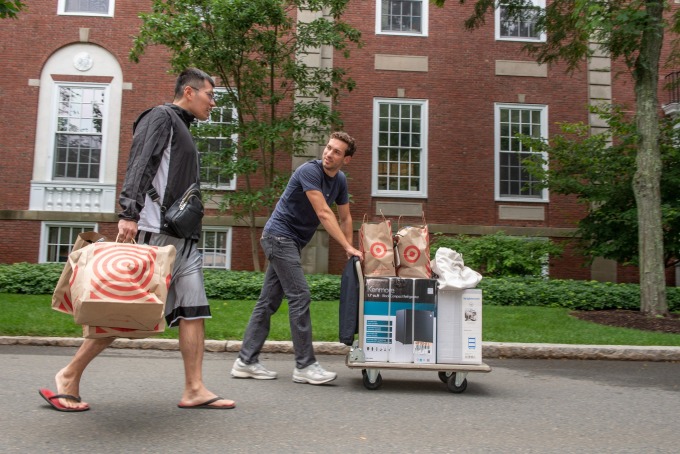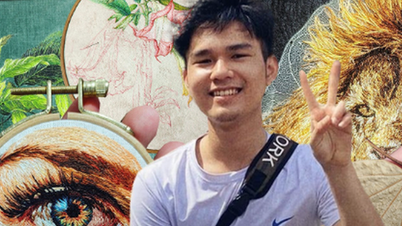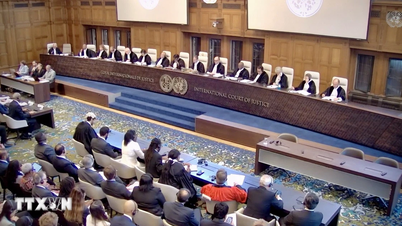A very small detail in your application can make or break your application to top universities in the US.
A female student from the United Nations International School in Hanoi who got into Harvard University has a mother who is a janitor. A Nigerian boyfriend got into the Massachusetts Institute of Technology (MIT) without taking the SAT and with a TOEFL score of only 75/120.
These phenomena are not uncommon at America’s most competitive schools. If you look at the applicants’ profiles, no one would have been sure they would get into these schools. Why? The answer is Holistic Admissions.
According to the Association of Public Universities, this is an admissions strategy that evaluates an applicant’s unique experience in addition to measures of academic achievement. Through this, colleges consider a range of factors that reflect an applicant’s readiness to learn, contribution to the school, and potential for future success.
This admission method also ensures diversity in a university's admissions process.
No common denominator
Ask admissions officers at top 20 schools like Rice, Vanderbilt, Amherst... and you'll get a mixed response: all and none. Every applicant is unique .
Even students who are accepted into these schools do not know why they were selected. If the reasons were made public, the schools would have to release specific information about the students, which would violate their privacy.
Second, this would mean that next year’s applications would all look the same, and the school would not be able to achieve its goal of diversity in admissions. Therefore, keeping the reasons for each applicant’s admission secret has become a professional norm in the admissions industry.
On a level of perfect grades and test scores, sometimes a very small personal detail in your profile can make or break your application. No one can predict which detail it will be because it depends on the overall profile of that year and the school's priorities.
In 2015, my school (Beijing International School) had 5 students apply to Princeton University but only one student got in. When they received the results, the university advisory board was surprised because the student who got in had been rated as the weakest.
Later, when I met a Princeton representative at a conference, I learned that because he played the clarinet, the school choir was short of a clarinet. In China, many students play the piano and violin, but clarinets are rare. That student was lucky.
The Nigerian boyfriend was waitlisted but got into MIT because of a unique recommendation letter from a professor at the school. He happened to meet him the summer before during a project to build a solar generator, and the letter changed the admissions committee’s decision. This is a miracle.

Students move around the Harvard Business School campus. Photo: Harvard University Fanpage
This admissions strategy is unique to the US and is only used extensively by top private schools. The reason is that this method of admission is very expensive, and only rich schools with many admissions officers can filter and read tens of thousands of applications each season.
Furthermore, the comprehensive admission process is highly flexible, creating more space for selecting candidates with outstanding qualities. Statistics from Harvard and some other schools show that among the applications that are rejected in each admissions cycle, no less than 4,000 have perfect GPA, SAT (standardized test including Reading, Language and Math), AP (advanced placement program) scores.
Therefore, it is mandatory to use factors other than academic achievement. This does not mean that schools only choose from the absolute score group, but priority factors such as race, nationality, family background, sports talent ... are sometimes more decisive.
The dark side of a holistic admissions policy
Holistic admissions is designed to select the best candidates, but it can also discriminate. In the past, Harvard’s admissions office seemed to only recruit a certain group of students—white, upper-class Protestants.
But in 1905, the college entrance exam reversed this preference. It made the college dream a reality for anyone with the test scores and financial resources to attend.
However, this was soon to change. After a few years of introducing the entrance exam, they became dissatisfied with the growing number of Jewish students. By 1922, this group made up more than a fifth of Harvard's freshmen. The percentage of Jewish students skyrocketed because their scores on the entrance exam were surprisingly better than those of other applicants.
Harvard changed its admissions criteria again. They introduced the concept of “holistic,” requiring applicants to submit essays, letters of recommendation, assessments of “manliness” (women were not allowed to attend college at this time), and evidence of extracurricular activities.
With such a matrix of criteria, a candidate can pass for any reason, and can also fail for dozens of other reasons. Therefore, if you apply to top schools, prepare to be rejected, and if you pass, there will be a bit of luck involved.
Mai Thuy Duong (Master of Educational Assessment and Evaluation)
Source link




![[INFOGRAPHIC] LG xboom AI: The coolest Gen Z portable speaker this summer](https://vphoto.vietnam.vn/thumb/1200x675/vietnam/resource/IMAGE/2025/7/29/db13af6569c24d0582b8a1c82e7cecd2)

























![[Photo] National Assembly Chairman attends the seminar "Building and operating an international financial center and recommendations for Vietnam"](https://vphoto.vietnam.vn/thumb/1200x675/vietnam/resource/IMAGE/2025/7/28/76393436936e457db31ec84433289f72)






































































Comment (0)